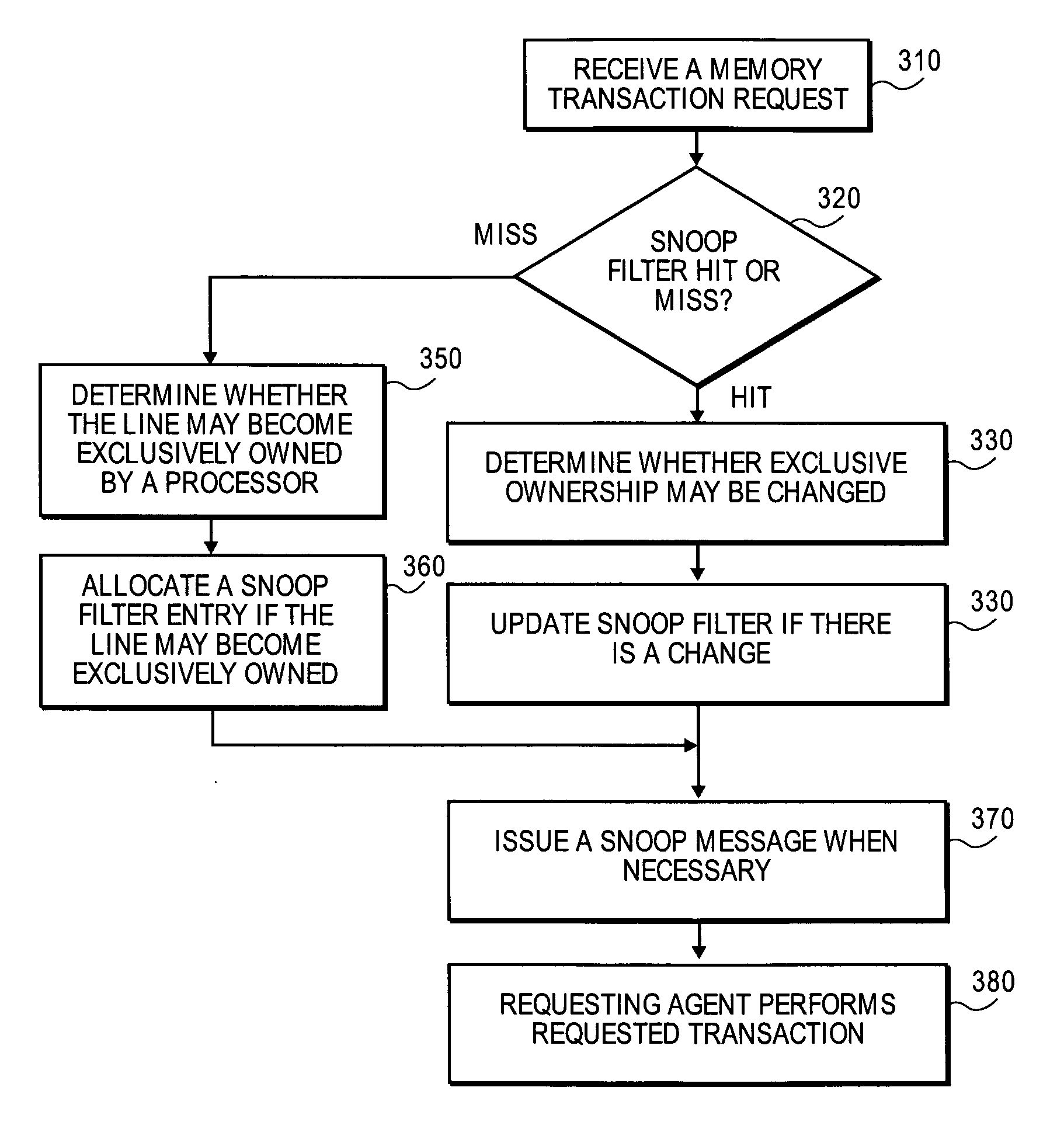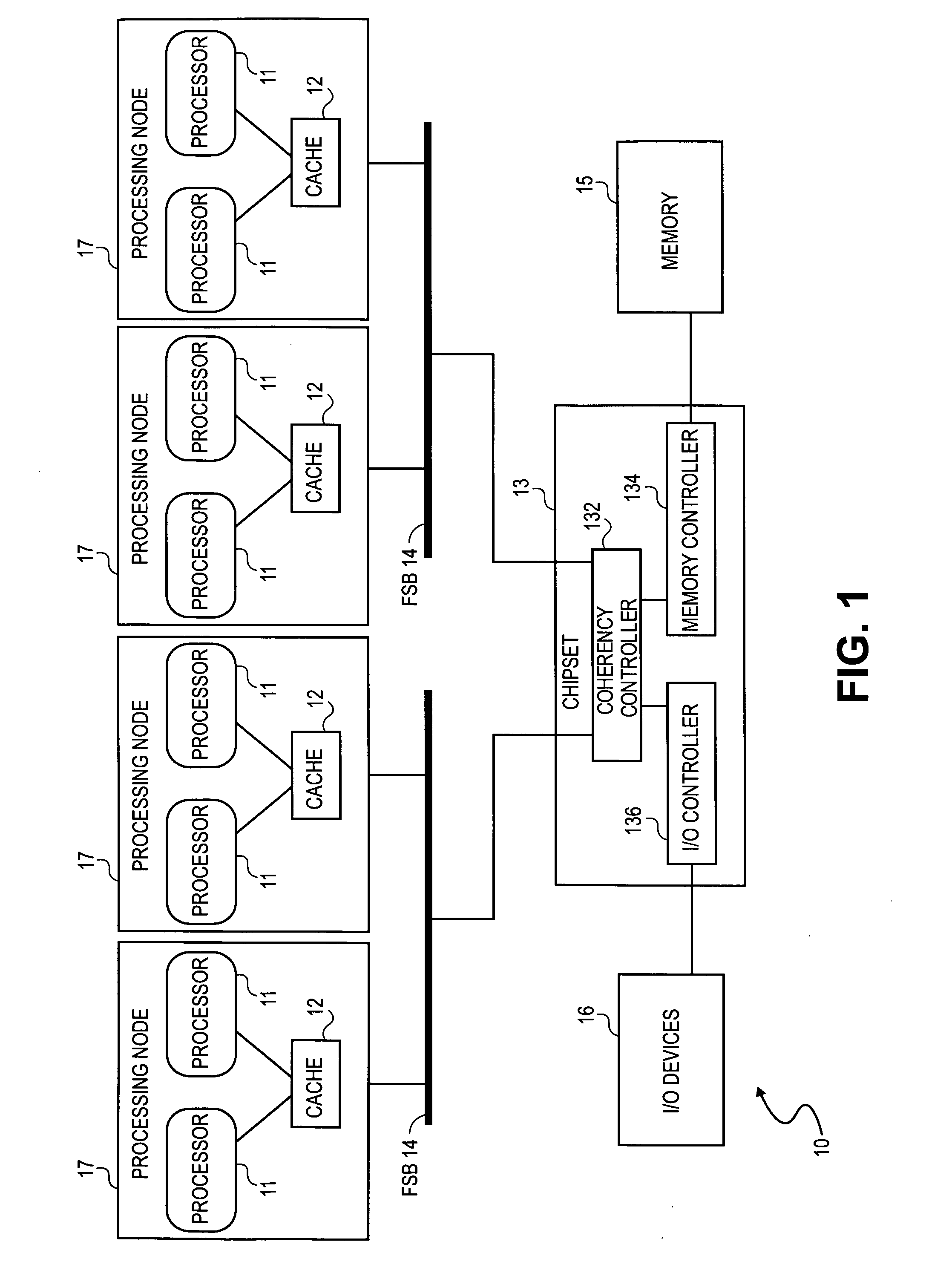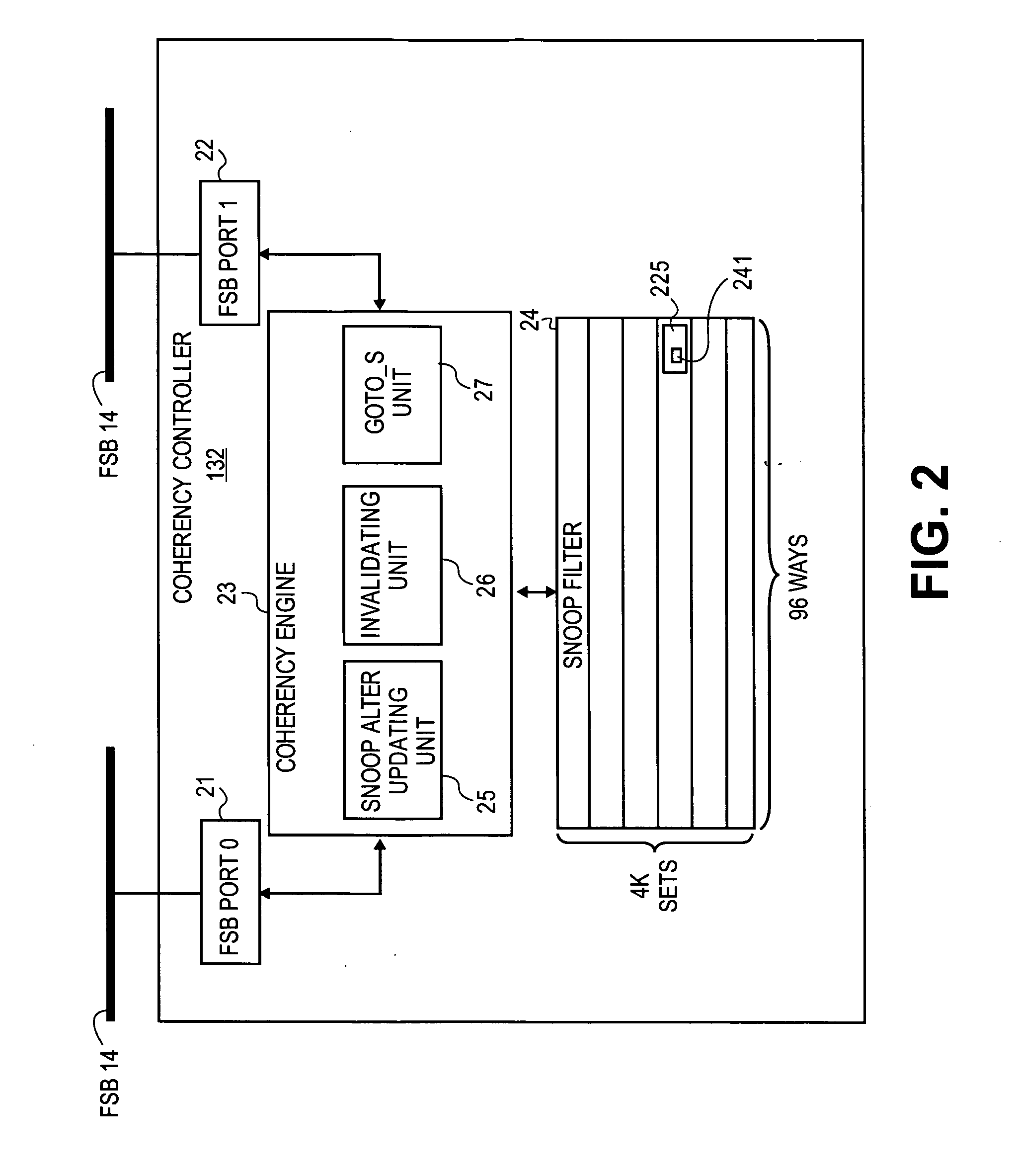Exclusive ownership snoop filter
a filter and exclusive ownership technology, applied in the field of multiprocessor systems, can solve the problems of significant number of cache misses, difficult to provide even 1 coverage for circuit designers, and incoherent multiple data copies in the caches
- Summary
- Abstract
- Description
- Claims
- Application Information
AI Technical Summary
Problems solved by technology
Method used
Image
Examples
Embodiment Construction
[0011]Referring to FIG. 1, an embodiment of a multi-processor system 10 may comprise a plurality of processing nodes 17 interconnected with a chipset 13. Each of the processing nodes 17 may include one or more processors 11 (two processors per processing node are shown) and a cache 12. Each cache 12 may be locally accessibly by processors 11 of a “home node” (the processing node in which this cache is located), and remotely accessible by processors 11 of “remote nodes” (the processing nodes other than the home node). Cache 12 is referred to as a “local cache” with respect to processors 11 of the home node. Processing nodes 17 may be coupled to chipset 13 via one or more front side buses (FSBs) 14 (only two FSBs are shown) or other types of datapaths (e.g., point-to-point connections). One or more of processing nodes 17 may be implemented on a single chip. System 10 may be used as a server system because of the high collective processing power it possesses. However, system 10 may als...
PUM
 Login to View More
Login to View More Abstract
Description
Claims
Application Information
 Login to View More
Login to View More - R&D
- Intellectual Property
- Life Sciences
- Materials
- Tech Scout
- Unparalleled Data Quality
- Higher Quality Content
- 60% Fewer Hallucinations
Browse by: Latest US Patents, China's latest patents, Technical Efficacy Thesaurus, Application Domain, Technology Topic, Popular Technical Reports.
© 2025 PatSnap. All rights reserved.Legal|Privacy policy|Modern Slavery Act Transparency Statement|Sitemap|About US| Contact US: help@patsnap.com



